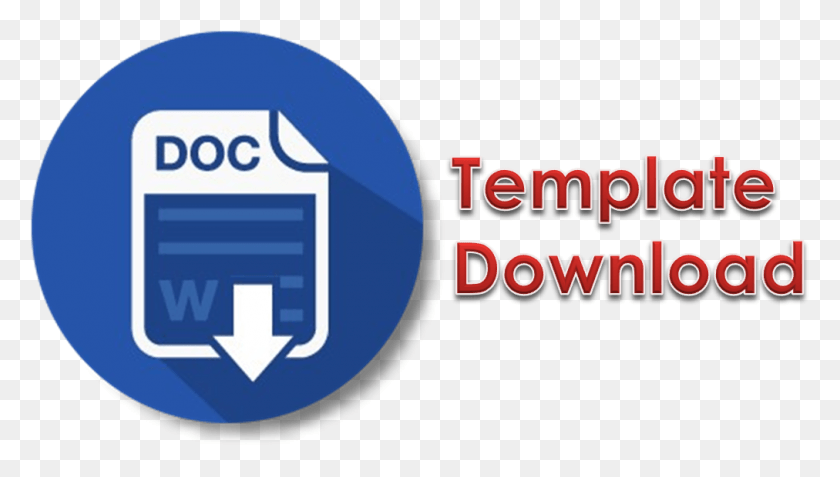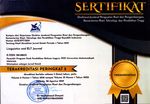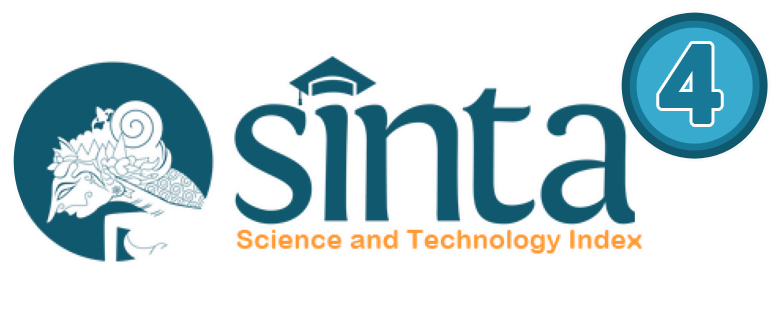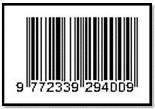Analysis of Online Learning Media and Its Usage in English Learning in SMA Negeri in Tarakan
Abstract
The objectives of the study were to analyze online learning media used by English teachers at SMA Negeri in Tarakan and find out the important factors that influence the successful use of online learning media by English teachers at SMA Negeri in Tarakan North Kalimantan. The study was descriptive qualitative. The subjects were the teachers of English at SMA Negeri in Tarakan. To collect the data used observations, interviews and documentation and to analyze the data used the stages of Miles and Huberman. The stages are data collection, data reduction, data display, and conclusions: drawing and verifying. The results of the study showed that 1) the online learning media platforms used by English teachers at SMA Negeri in Tarakan were quite varied. The online learning media platforms include google classroom (84.6%), google meet (76.9%), Whats-App group (76.9), zoom meeting application (61.5%), Microsoft teams (15.4), telegram (46.2), rumah belajar (7.7%), you-tube (61.5%), madrasah e-learning (7.7%), google form (7.7%), quiziz (7.7%), online test provider websites (7.7%) and eduku (7.7%). Most of the English teachers at SMA Negeri in Tarakan used the Google Classroom online learning media platform, 2) The success of online learning on English at SMA Negeri in Tarakan was influenced by teacher factors, technological factors and design and content factors.
Keywords
Full Text:
PDFReferences
R. M. Kosanke, “Teaching Media in EFL Clasroom: What are they and why select them?,” vol. 2, no. 1, pp. 87–97, 2019.
S. Hadijah, M. Marhamah, and S. Shalawati, “Interactive and Educative Learning Media in English Language Teaching At Senior High Schools,” AL-ISHLAH J. Pendidik., vol. 12, no. 2, pp. 304–315, 2020, doi: 10.35445/alishlah.v12i2.202.
H. P. Rini and D. K. Sawitri, “Analysis of Intercultural Communication in Implementation of Independent Student Exchange Program,” Ilomata Int. J. Soc. Sci., vol. 3, no. 1, pp. 12–21, 2022, [Online]. Available: https://scholar.archive.org/work/sy63srah7bdsfaghtihipmxpqy/access/wayback/https://www.ilomata.org/index.php/ijjm/article/download/302/222.
A. Abduloh, M. Muhammadiah, H. Harizahayu, C. B. Susilo, S. Saodah, and A. Arifin, “Implementation of Online Learning Media in the Covid-19 Pandemic,” AL-ISHLAH J. Pendidik., vol. 13, no. 3, pp. 1958–1966, 2021, doi: 10.35445/alishlah.v13i3.639.
M. Helmi Azhar and A. Ghufron, “Analysis of Learning Media Needs in the Implementation of Online Lectures during the Covid-19 Pandemic,” AL-ISHLAH J. Pendidik., vol. 14, no. 1, pp. 301–310, 2022, doi: 10.35445/alishlah.v14i1.827.
S. Bari, “Using An Effective Online Learning Media on Student’s Outcome,” JOEY J. English Ibrahimy, vol. 1, no. 1, pp. 54–60, 2022, doi: 10.35316/joey.2022.v1i1.54-60.
H. T. Hardini, M. Taufiq, M. D. Bahtiar, and V. Pratiwi, “Use of Online Learning Media and Learning Behavior as Predictors of Student Accounting Understanding,” Edukatif J. Ilmu Pendidik., vol. 3, no. 6, pp. 3663–3674, 2021, doi: 10.31004/edukatif.v3i6.1013.
J. W. Creswell, Research Design Qualitative, Quantitative, and Mixed Methods Approaches Fourth Edition. California: SAGE Publication, Inc., 2014.
N. Harahap and M. Rusli, “Online Learning Media in Higher Education in the New Normal Era,” Lang. Lit. J. Linguist. Lit. Lang. Teach., vol. 5, no. 2, pp. 512–518, 2021, doi: 10.30743/ll.v5i2.3879.
J. Jamilah, T. Sukitman, and M. Fauzi, “Opportunities and Challenges of Digital Learning Media During the Covid-19 Pandemic in Primary School,” Form. J. Ilm. Pendidik. MIPA, vol. 11, no. 2, pp. 191–200, 2021, doi: 10.30998/formatif.v11i2.9732.
H. Marhadi, “Technologies as Online Learning Media : The Problems and Solutions in School,” Proc. UR Int. Conf. Educ. Sci., no. 4, 2021.
F. Huwaidi, A. B. D. Nandiyanto, and N. Muhammad, “The Urgency of Online Learning Media during the Covid-19 Pandemic at the Vocational School in Indonesia,” Indones. J. Educ. Res. Technol., vol. 1, no. 2, pp. 35–40, 2021, doi: 10.17509/ijert.v1i2.33368.
B. Lusiana and R. Maryanti, “The Effectiveness of Learning Media Used During Online Learning,” Media Pendidikan, Gizi, dan Kuliner, vol. 9, no. 2, pp. 81–92, 2020, [Online]. Available: https://doi.org/10.17509/boga.v9i2.38379.
A. N. Azhiimah, T. Rijanto, Munoto, L. Nurlaela, I. Basuki, and Joko, “An analysis of online learning media in promoting learners’ autonomy during covid-19 pandemic,” J. Phys. Conf. Ser., vol. 1810, no. 1, 2021, doi: 10.1088/1742-6596/1810/1/012070.
S. Syarifuddin, “The Development of Online Learning Media Based on TikTok for Teaching Local Wisdom Course During the Covid-19 Pandemic,” Int. J. Interact. Mob. Technol., vol. 16, no. 22, pp. 127–141, 2022, doi: 10.3991/ijim.v16i22.36149.
DOI: https://doi.org/10.31764/leltj.v11i1.14629
Refbacks
- There are currently no refbacks.
Copyright (c) 2023 winarno winarno

This work is licensed under a Creative Commons Attribution-ShareAlike 4.0 International License.
_____________________________________________________
Linguistics and ELT Journal
p-ISSN 2339-2940 | e-ISSN 2614-8633

LELTJ is licensed under a Creative Commons Attribution-ShareAlike 4.0 International License.
_____________________________________________________
LELTJ is abstracting & indexing in the following databases:
_____________________________________________________
LELTJ Editorial Office:













